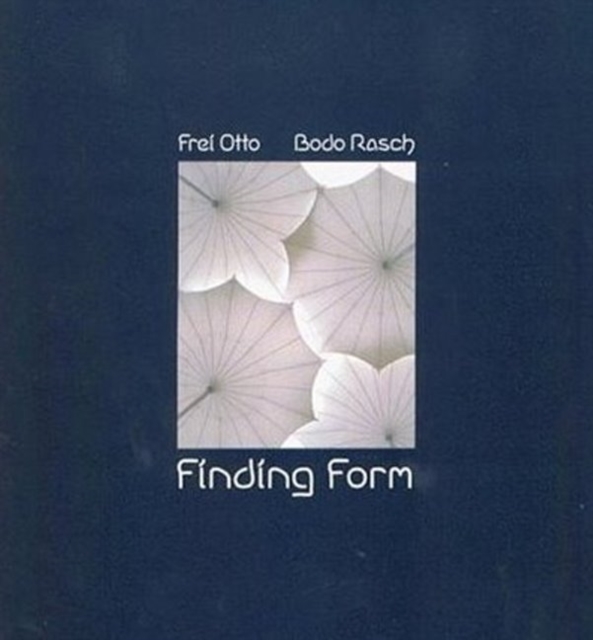
Finding Form : Towards an Architecture of the Minimal Hardback
by Frei Otto, Bodo Rasch
Hardback
- Information
Description
2019 Edition "Primeval architecture is an architecture of necessity.
Nothing is there to excess, no matter whether stone, clay, reeds or wood, animal skins or hair are used.
It is minimal. It can be very beautiful even amidst poverty and is good in the ethical sense.
Good architecture seems to be more important than beautiful architecture.
Beautiful architecture is not necessarily good. Only buildings that are at the same time ethically good and aesthetically beautiful are worth preserving.
We have too many buildings that have become useless and yet we still need new buildings, from pole to pole, in the cold and in the heat.
Mans present areas of settlement are the new ecological system in which technology is indispensable, even in hot and cold areas. ... Our age requires buildings that are lighter, more energy-saving, more mobile and more adaptable, in brief more natural, without disregarding the need for safety and security.
This logically leads to the further development of light constructions, to the building of tents, shells, awnings and air-supported membranes.
It also leads to a new mobility and changeability. A new understanding of nature is forming under one aspect of high performance form (also called classical form), which unites aesthetic and ethical viewpoints.
Tomorrows architecture will again be minimal architecture, an architecture of the self-education and self-optimization processes suggested by human beings." (Frei Otto and Bodo Rasch in their foreword of this book) In 1992 the Bavarian branch of the Deutscher Werkbund awarded its first prize to Frei Otto, undoubtedly the most successful and many-sided protagonist of modern light construction, and with it a request to nominate a meritorious person to whom the prize could be passed on, and to design a joint exhibition with that person.
Frei Otto chose his pupil Bodo Rasch, who had realized Ottos theories particularly in other cultures.
The publication produced on this occasion provides information about scientific fundamentals and the working methods the two architects developed from these, which are characterized by "finding" not by "making".
This is supposed to produce buildings that could not be more beautiful and can scarcely be improved in terms of materials and loadbearing capacity.
Information
-
Out of StockMore expected soonContact us for further information
- Format:Hardback
- Pages:240 pages
- Publisher:Edition Axel Menges
- Publication Date:19/01/1996
- Category:
- ISBN:9783930698660
Information
-
Out of StockMore expected soonContact us for further information
- Format:Hardback
- Pages:240 pages
- Publisher:Edition Axel Menges
- Publication Date:19/01/1996
- Category:
- ISBN:9783930698660